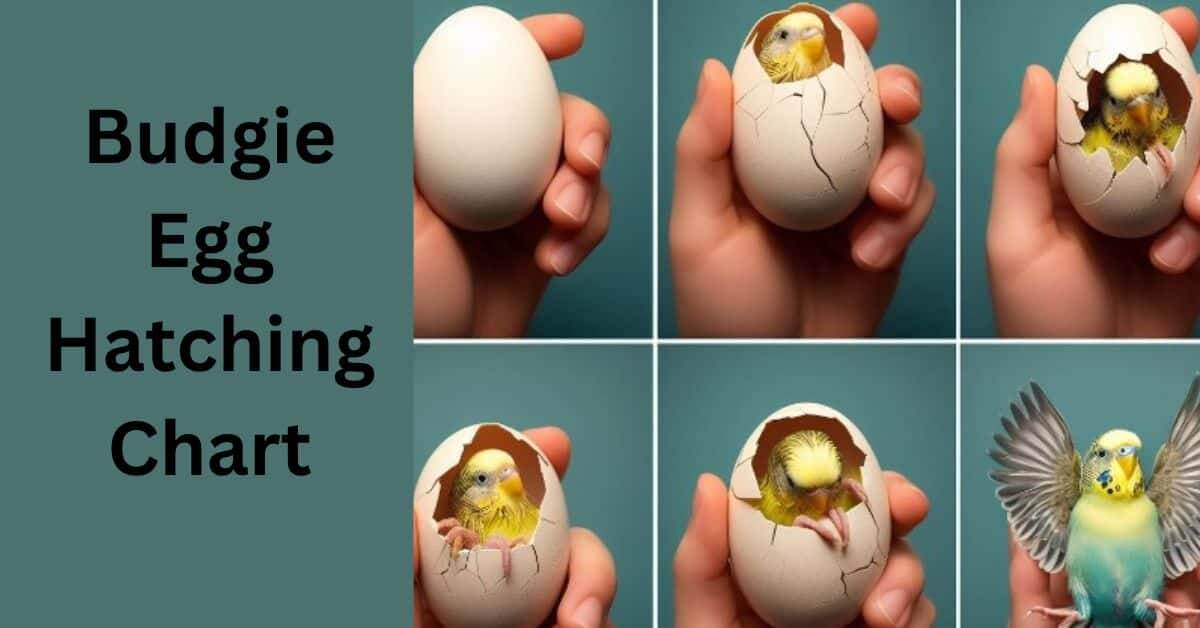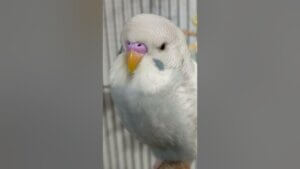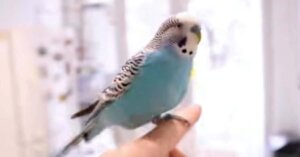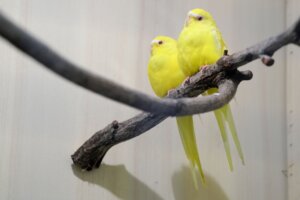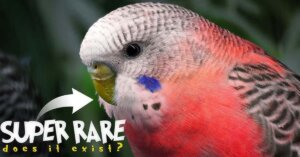Budgie Egg Hatching Chart Explained
Hey, you have a budgie at home and are thinking of getting more? You can watch the Egg Hatching Chart at Budige. It’s a convenient guide that’ll help you hatch budgie eggs in no time at all.
Here, I am sharing with you all the necessary points and cool stuff with respect to my experience of hatching budgie eggs.
The Budgie Egg Hatching chart is your quick go-to for a hatching time guide. It’s also super helpful if you are the person who is the favourite to watch your baby budgie grow.
With the help of a chart guide, you can take care of budgie hatchlings, which means inspecting them regularly to ensure a safe instance before they hatch into cheerful, healthy chicks.
What Is Budgie Egg Hatching?

Budgie egg hatching is the beginning of a baby budgie, also known as a budgerigar chick, emerging from the egg. It occurs around 18 days after the egg has been laid. The mum budgie keeps her eggs warm by sitting on them until they are ready to hatch.
How Does the Budgie Egg Hatching Chart Work?

A budgie egg hatching chart is a straightforward tool for noting when budgie eggs are likely to hatch. When a budgie bird lays an egg, you can use this chart to calculate the days you might expect the bird’s chicks to break out of the eggshells.
Here’s how it usually works:
- Write the Date: Note the date when the first egg was laid. These eggs can count up to four to six; a budgie is likely to lay an egg after every other day.
- Counting Days: Add 18 days to the date each egg was laid. Budgie bird eggs, on average, take 18 days to hatch.
- Watch for Signs: When the day you acquired after counting gets close, watch the eggs, as chicks may start pipping. The budgies will crack and break the shell away.
The chart helps you remember important days and makes it fun. It will suit you; it may also be fun to wait for a particular day, like marking off the days on the calendar.
Benefits of the Budgie Egg Hatching Chart

Using a budgie egg-hatching chart has many advantages, particularly if you want to be vigilant about the status and health of the eggs and their mother, Budgie. With that, here’s why it’s an excellent tool to use:
1. Track Progress
The chart allows you to monitor the growth of an egg. You will no longer be left guessing when each egg will hatch. As a result, you may ensure all is proceeding according to the plan.
2. Preparation for Hatching
If you know when the chick will be born, you may prepare beforehand. This might involve raising or lowering the area’s temperature, inspecting the humidity, or, if necessary, giving the chick a helping hand if hatching is complex.
3. Educational Tools
If you have kids or are new to breeding budgies, the chart is a fantastic educational tool. It teaches about the bird’s life cycle in a hands-on way.
4. Monitoring Health
The chart is instrumental in determining any issues or delays in the hatching procedure. Ensuring that an egg that has not hatched on schedule may require some extra help or that something might be wrong might save the chick.
5. Record Keeping
Record-taking Information identified throughout the breeding should be kept. Such records may serve as evidence in the future, for example, if someone decides to breed a few bobwhites.
The budgie egg hatching chart is a straightforward and practical approach to guarantee that not every unit of your friend and her offspring will receive all the aid and shield on its own.
Factors Affecting Budgie Egg Hatching
There are also several factors which affect the hatching of budgie eggs. These include:
1. Temperature and Humidity
Budgie eggs need to hatch in a comfy, warm room—the ideal is usually 99.5°F or 37.5 °C°C and don’t forget humidity. The best way to think about this is to imagine light morning dew—about 40-50% works. If it is too hot, cold, humid, or wet, the eggs will have a hard time breaking through.
2. Parental care
Budgie’s parents are the most dedicated babysitters on the planet. They keep the eggs warm and turn them gently several times daily. They will not hatch without sufficient care.
3. Egg Quality
The ideal egg is smooth, not too big or small, and has a serious “shell”, according to one study. Another revealed that eggs with weird shapes or weak shells hardly ever hatch. In other words, you don’t have a house without a strong foundation.
4. Nutrition
Rich calcium or protein diets are also excellent egg-laying agents among budgies. Some of these include broccoli, boiled eggs, and cuttlebone, which can boost egg quality. Like humans taking vitamins to stay healthy and happy, certain nutrients help create robust and healthy eggs that break hatching records.
Therefore, each factor plays a significant role in ensuring the eggs have what it takes to hatch.
Importance Of Monitoring Budgie Egg Hatching Process
Keeping an eye on budgie eggs as they hatch is super important. It’s a bit like being a detective, watching closely to make sure everything goes smoothly.
That’s what bird fans and breeders get out of it:
- Spotting problems early: With regular check-ups, you can see if something isn’t developing correctly or if a chick is having a problem hatching. This enables you to do something about it quickly.
- Recording their growth: This is just like taking a diary of the egg. You can observe how it grows and changes, which is not only fascinating in itself but also vastly helpful for future knowledge.
- Making conditions perfect: The hatching process is about making the environment around the egg just right. By monitoring, the breeders can adjust temperature and humidity to make the egg perfect for hatching.
- Helping out when needed: Sometimes, the chick needs some help to break free of the egg, and by monitoring, the breeders will be able to tell precisely when they need to do so.
Watching and understanding the hatching is the most important key to raising healthy birds this way. All that is left is giving the best care and conditions for the bird to start its life.
The Lifecycle Of a Budgie Egg
The lifecycle of a budgie egg is impressive, containing unique stages that ultimately take a chick from egg-laying to the moment it breaks out of the shell.
Below is a brief guide to these stages:
- Egg Laying: Female budgies are prolific egg layers. They will lay about 4-6 eggs per clutch, around 2 days apart, for a week or two.
2. Egg Incubation: After egg-laying, both parents sit on the eggs in shifts to provide heat. The natural incubation temperature is precisely 99.5°F. For optimal 21-day incubation, this temperature must be present throughout egg incubation.
3. Embryo Development: Life kicks off inside the egg. Within one week, the embryo’s heart starts beating. If you were to candle the egg, a developing chick should be visible moving about within ten days. The chick transforms from a speck to a fully recognizable form in days.
4. Hatching: This process occurs around 18 days after egg-laying. The chick uses the egg tooth, a tiny, sharp structure at the end of its beak, to break out of the shell.
Each stage is essential; the right conditions are needed to see the chicks healthy after hatching. It is a delicate process, requiring a proper sequence of events from the egg-laying stage to the thrilling moment of hatching.
Day-by-day Progress Of Budgie Egg Development
The day-by-day progress of budgie egg development is a fascinating journey to witness. Here is a breakdown of the key stages:
| Day | Development Stage | Details/Examples |
|---|---|---|
| Day 1 | Embryo Formation Begins | The fertilized egg starts its incubation. Here, the embryo begins to take shape, though it’s still microscopic. |
| Day 5 | Visible Blood Vessels | The growing embryo now has tiny blood vessels visible to the naked eye, a sign of healthy development. |
| Day 10 | Feather and Beak Development | Feathers start to emerge, and the beak becomes more distinct. At this stage, the chick’s heart is fully formed and beating. |
| Day 14 | Full Formation Inside the Egg | The chick now fills most of the egg’s space. It’s almost ready to hatch, moving and positioning for the exit. |
| Day 18 | Hatching | The chicks break through their shells. Fun fact: the average time for a chick to hatch can range from a few hours to a full day. |
Caring For Budgie Eggs During Hatching
A warm place. Ensure that the place where the eggs are is warm. The temperature should be around 99.5°F ok 37.5°C. Use a thermometer to check this. Moist place. The air around the eggs must be moist. The humidity levels needed are between 50% and 65%.
A hygrometer will help you know if this condition is maintained. The nesting spot is quiet. The place that your budgies have nested in must be calm. Stress the birds will make them not keep the eggs warm check after all.
Feed the parents well. Ensure that the parents taking care of the eggs are healthy. Give them foods such as fruits rich in calcium and proteins. This makes them strong. Don’t check the eggs often. Try to avoid touching the eggs as much as possible.
If you must, do it fast and prevent the adult bird from getting pressured. Help whenever is required. Sometimes, a chick may have challenges getting out of the eggshell.
In that case, you’ll have to help, but ensure you do it properly. That should be the last option. Care after hatching. After hatching, the chicks need to be fed well.
Also, they must be kept in a warm and safe environment. Stable, warm, and quiet. Doing this helps the egg hatch properly and gives the best chance for the chicks to start growing.
What To Do If a Budgie Egg Doesn’t Hatch?
If a budgie egg does not hatch, it can be stressful, but you can manage the situation by doing the following:
Wait Patiently: Sometimes, a chick hatch a little later than expected. I would allow a couple more days after the standard egg’s 18-day incubation period. Ensure you keep the proper warmth and humidity.
Check the Egg: After waiting a bit, you can carefully check the egg. Candle the egg by shining a dim light through the shell to see if there’s a chick. You should be able to see a visible embryo or blood vessels.
Evaluate the Conditions: If the incubation is incorrect, it might prevent the chick from hatching. Meanwhile, you can check the heat and humidity levels. Nest placement could change slightly to create out-of-control incubation.
Remove Unviable Eggs: If an egg does not hatch even after waiting and checking or has visibly gone wrong, you should remove it from the nest. This will keep the nest clean from rotten eggs and secure the other eggs and chicks.
Consult a Vet: if you see more than one egg that does not hatch, it might be ideal to see a doctor. The vet will explain why eggs might not hatch or be uncertain because of parents or other underlying issues.
Otherwise, the remaining eggs and their parents should be safe. If the eggs do not hatch on time, careful monitoring and minimal intervention are required.
When to Remove Unhatched Budgie Eggs?

When dealing with unhatched budgie eggs, it’s important to know the right time to remove them from the nest. Typically, if an egg hasn’t hatched by three to four days past the expected 18-day incubation period, it’s likely not viable.
Before removing an egg, you can use a method called candling—shine a light through the egg in a dark room to check for signs of development like blood vessels or an embryo.
If the egg shows no signs of life or development, it’s safe to remove it to keep the nest clean and prevent any potential health risks to the remaining eggs or chicks. Always handle the process with care to avoid disturbing the nest too much.
Here is more details.
| Criterion | Signs to Look For | Details/Examples | Action to Take |
|---|---|---|---|
| No Movement | Lack of activity | If there’s no movement in the egg after 18-21 days (the normal hatching period), it might mean the egg is infertile or the embryo hasn’t developed. | If no change after 21 days, consider removing the egg. |
| Bad Odor | Foul smell | A rotting egg emits a bad odor. This can happen if the embryo dies and decomposes inside the shell. | Remove smelly eggs immediately to avoid bacteria spread. |
| Discoloration | Dark or discolored eggs | Eggs turning colors or showing spots might indicate they’re not viable. | Observe any discolored eggs closely; if no other signs of hatching, remove them. |
| Extended Incubation | Overdue eggs | Budgie eggs typically hatch in 18 days. If they haven’t hatched by day 21, it’s likely they won’t. | After 21 days without hatching, it’s safe to remove these eggs. |
If you’re unsure or it’s your first time breeding budgies, consulting with a vet or experienced breeder can provide additional guidance.
Check out my latest post- How to Make Homemade Baby Budgie Food?
Frequently Asked Questions On Budgie Egg Hatching Chart
How Long Does Budgie Eggs Take To Hatch?
Budgie eggs take approximately 18 days to hatch.
How Many Eggs Do Budgies Lay the First Time?
A female budgie can lay between four and six eggs for the first time, but it is not abnormal for them to lay fewer or even more. Budgies are opportunistic breeders, so they can lay eggs anytime and in any number as long as the atmosphere is favorable.
When Can I Candle A Budgie Egg?
You can candle a budgie egg to check its fertility and development after 7-10 days of incubation.
Overviews
In this blog post, we have explored the fascinating world of budgie egg hatching. From candling to incubation, we have learned about the different stages of chick development.
With the help of a handy chart, you can easily determine when your budgie eggs will hatch. In addition, it is truly amazing to witness the transformation of a small egg into a beautiful budgie.
So, whether you are a seasoned breeder or a curious bird lover, this information will be useful. Happy hatching.
Hello Dear, I'm Poli Kolymnia, owner of many birds (including budgies).
With a deep passion for these feathered companions, I'm here to share my expertise and extensive knowledge on birds care.
My articles cover essential topics like diet, housing, care, and health, providing practical tips to help you create a happy and thriving environment for your birds.
